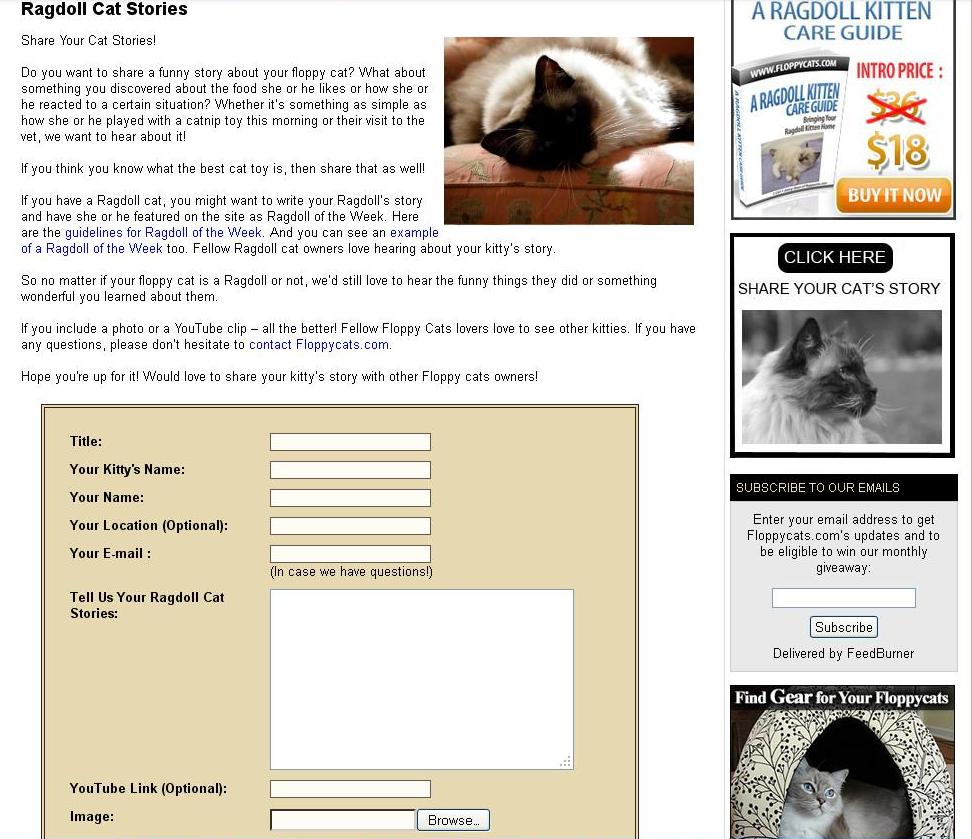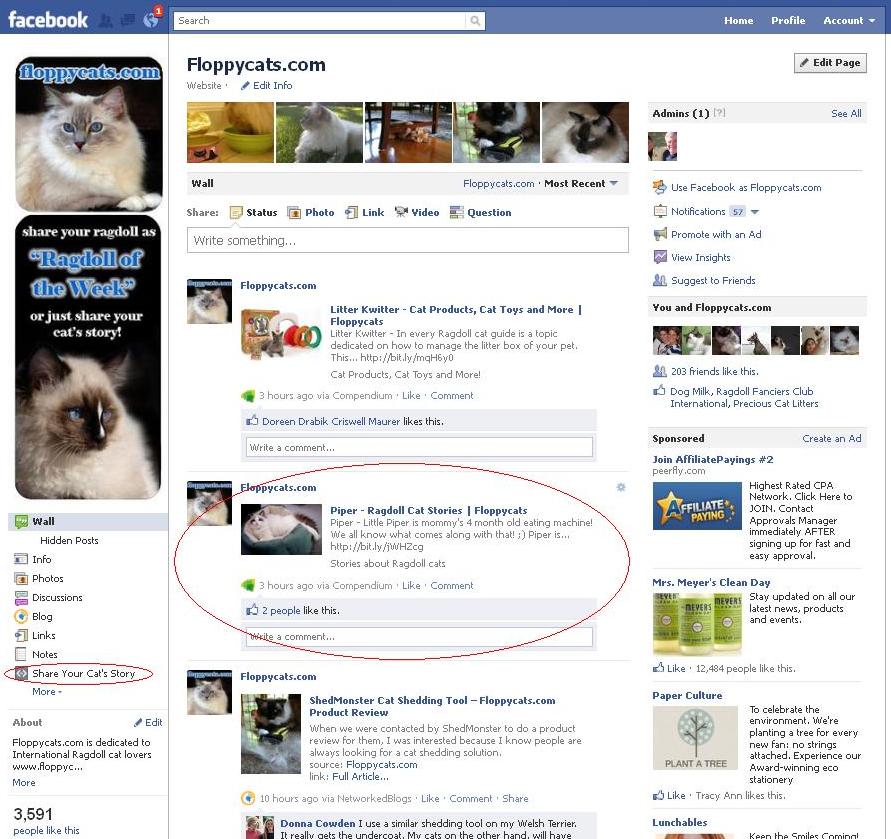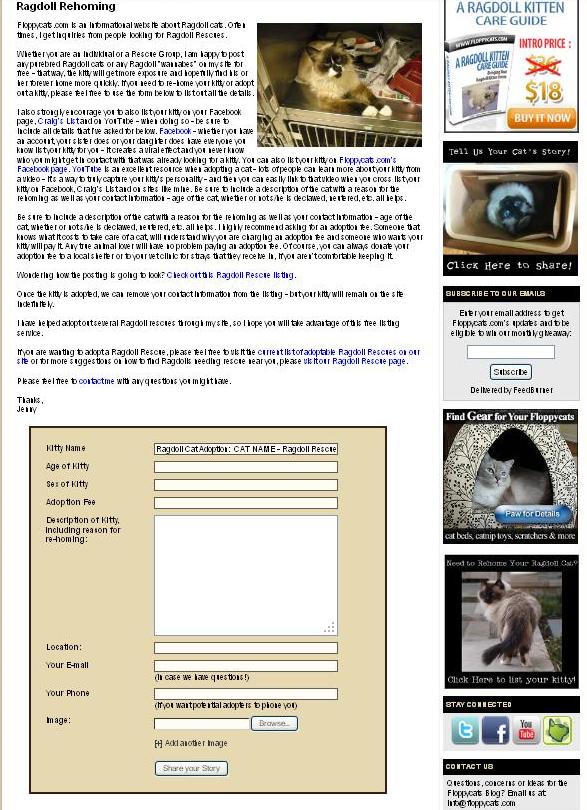“An Interesting Blog Business Model” plus 1 more |  |
| An Interesting Blog Business Model Posted: 11 Jul 2011 01:08 PM PDT This guest post is by Kevin Muldoon of WordPress Mods. Most of you will be aware of the most popular business models for blogs. A large majority of blogs rely on revenue from advertising such as banner ads and paid reviews. Once a blog is very successful, its owners usually branch out and sell physical and digital products too such as books, membership courses, and premium content. Many successful bloggers simply use their blog as a platform to promote their own consulting services. It's important to do a little research into what business model suits you and your blog, as it's going to be the way you make money through blogging. When I launched my WordPress blog a year or so ago I decided to adopt a magazine model and make money through banner advertisements, adding paid reviews once the site is more successful. Once the site is established I will be in a good position to sell products through it, too, in the same way that Darren has launched his fantastic blogging workbooks through ProBlogger and the hugely popular ProBlogger book. A business model with a twist?The majority of blogs fall into the 10 Blog Business Models that Skellie spoke about a few years ago, however there is nothing stopping you doing something a little different. A great example of this is WP Candy (one of my favourite blogs about WordPress). Well designed and updated regularly with great content, its owner Ryan Imel adopted the magazine model for WP Candy, though he did things a little differently. Instead of selling banner ads, WP Candy has managed to stay ad-free by using a so-called “Powered By” system.  The “Powered By” system is quite straightforward. Every blog post has a small link at the bottom stating who “Powered” the post. It is very similar to those who allow advertisers to sponsor a post, though there’s one main difference: instead of the link going to the sponsor’s website, it goes to a thank you page on WP Candy that tells you more about the website and lists the number of posts the sponsoring company has sponsored (Have a look at the biggest contributor for an example). Advertisers have a number of ways in which they can gain exposure on the site. Just $5 a month will get you a link in a thank-you post every month, while a one-off payment of $50 will give you a permanent “Powered By” link on a post and a thank you in the weekly podcast. Skeptics may look at the business model WP Candy has adopted and say that all they are doing is selling text links instead of banner ads. Perhaps this is the case, though they haven't broken any rules—they are simply linking to a dedicated page for sponsors and the links on that page are coded “nofollow”. So what they have managed to achieve is provide a unique way for advertisers to promote their products and services whilst removing all banner ads from the site, making the reading experience more enjoyable for the reader (something that Leo Babauta also did with Zen Habits). Think outside the boxI'm not encouraging you to adopt the “Powered By” system that WP Candy has created. What I do encourage you to do is be more creative with the way you make money through your blog.
I'd love to hear of the interesting ways you generate income for your blog. Have you grown beyond the magazine business model and developed alternative ways to make money through your site? Kevin Muldoon is a webmaster and blogger who lives in Central Scotland. His current project is WordPress Mods; a blog which focuses on WordPress Themes, Plugins, Tutorials, News and Modifications. Originally at: Blog Tips at ProBlogger An Interesting Blog Business Model |
| How Compendium’s Web to Post Generates Content and Community Posted: 11 Jul 2011 07:01 AM PDT This guest post is by Jenny Dean of Business Blog Writers. You might have read my article about a business blogging platform called Compendium. Today, I wanted to share with you a fantastic Compendium tool called, Web to Post that allows customers or clients to tell stories about your products or services. Web to Post turns your consumer’s advocacy into web content. Of course, as Business Blog Writers, sometimes this writes us out of the picture, but at the same time, if we are used to supplement the Web to Post content, then we can also get a lot of content ideas from what customer or clients submit. In addition to my blog writing business, I also have a Ragdoll cat blog and all images of Compendium’s Web to Post form come from that. How does Web to Post work?A Call to Action is put in the sidebar of the blog. The CTA usually says something like, "Share Your Story". This call to action can also be put on your Facebook fan page, in your newsletter, on your YouTube Channel or in an email to an existing database. The customer sees the CTA and decides to submit a story. They click on the link and are taken to an online form that asks them things like their story title, the story, and their first and last name. They can also choose to upload a photo to include with their story. The forms are totally customizable to fit your campaign or story needs. Once the stories are received, the administrator of the blog is sent an email letting him or her know there is content waiting in the system. The stories can be edited, approved or declined from there, just like internal blog posts on Compendium's system. So in other words, the story isn't instantly on your company website the second the customer or client hits "submit". Rather, it has to go through an administrative layer for final approval. This is awesome, because it turns your advocates into your bloggers! [Share Your Story Submission on Dashboard.jpg] Once the administrator has checked out the post and added a keyword rich title, then the admin approves it. At that point is the Compendium algorithm automatically categorizes or tags the story to the relevant, targeted keyword pages on your blog . The admin can also choose to promote it on your company's social networks, like Twitter, Facebook, and LinkedIn. Then, the viral effect kicks in. Each story is published on your company's blog, Facebook, Twitter, and LinkedIn pages. The customer who submitted the story also gets an automatic email that says their story has been published on your company's blog. Another link encourages them to share their featured story on their own social network profiles. How Web to Post helps business blogsLee Jorgenson, an Account Manager at Compendium recently pointed out that Sears Outlet has generated over 5,000 posts in just three months by gathering content from five different channels. Sears Outlet sends a great transactional email after someone purchases from their website that invites customers to share their stories. This email is timely and helps harvest stories while they are fresh in the customer's mind. The email has a link that drives the customer to a web to post form to submit their story. They also use the Web to Post forms to capture stories from blog and website visitors. They also have one embed on their Facebook fan page tab and collect stories from Facebook fans that way. The process is simple: Content → Exposure → Referrals → Sales Another Compendium client, The College Network, was able to launch a contest asking nurses to share their stories. The prize? An iPad. They received nearly 100 user generated stories (that's 100 free posts!). The stories got over 40 comments and over 1,500 Likes. They drove 3,500 unique visits to their story page and tracked an average of 35 additional Facebook fans per day from the campaign. It also increased their organic search traffic by 25%—all for the cost of an iPad. How Web-to-Post helps smaller bloggersAs far as my site, Floppycats.com, is concerned, Web to Post has made my life incredibly easier. When I run a giveaway, I tell people that for an extra chance to win the prize, they can submit a photo of their cat as well as a description explaining why their cat needs to win the product. This approach not only generates more activity on my site, but also creates more content for my blog. And readers love to see photos of their cats on my blog! I also use Web to Post for Ragdoll breeders who want to advertise kittens for sale. It saves me the time involved in uploading them to the site, and entering all the information—and they’re hosted on Compendium's server, not the one I am paying for. I also use Web to Post to accept content from people who need to rehome their Ragdoll cats, and cat rescue groups that need to get the word out about cats available for adoption. I give a lengthy explanation of what I want (this eliminates time-consuming emailing back and forth between the poster and me) and provide examples so readers know what information they need to submit. So while Web to Post is great for sales and boosting social media buzz about your company, for the blogger who wants an active online community on their blog, Compendium's Web to Post can also make your life a lot less busy. Just say “no” to too much right- and left-clicking! What if you don't have compendium?If you don't have Compendium, you can probably still put something like this together, but it would require more manpower and coordination to get it done. Frankly, I don't like to spend my time on the technicalities and would rather have it right from the get-go. Compendium's business blogging platform simply takes care of the strategy, process and technology so your business can focus on the content and stories. Jenny Dean is a 31-year-old-business owner and entrepreneur from Kansas City. Jenny is currently working on Business Blog Writers, a company that supplies blog content specifically for company's blogs, Floppycats.com, an informational website about Ragdoll cats and Antioxidant-fruits.com, an informational website about the antioxidant powers of fruit. Follow Business Blog Writers on Twitter or on Facebook. Originally at: Blog Tips at ProBlogger How Compendium's Web to Post Generates Content and Community |
| You are subscribed to email updates from ProBlogger Blog Tips To stop receiving these emails, you may unsubscribe now. | Email delivery powered by Google |
| Google Inc., 20 West Kinzie, Chicago IL USA 60610 | |
















.jpg)
0 comments:
Post a Comment